Devs Sound Off: The State of the Indie-stry, 2014
Some of gaming's greatest ideas in recent years have come from the old-school spirit of garage developers. But are they at risk of getting lost in an increasingly competitive space?
This article first appeared on USgamer, a partner publication of VG247. Some content, such as this article, has been migrated to VG247 for posterity after USgamer's closure - but it has not been edited or further vetted by the VG247 team.
The Penny Arcade Expo might have started as a "for us, by us" fan-based effort, but it's come a long way since its 2004 debut brought roughly 3,000 gaming enthusiasts together in the same space.
Squint, and you might think you're at E3. While PAX's vibe remains much less cynical than the marketing-driven excess on display at the Los Angeles Convention Center, this annual gathering bears more than a passing resemblance to the early days of the Electronic Entertainment Expo, when civilian, developer, and press mingled on the same level amid the chaos of giant corporations vying for everyone's attention. (The booth babes are still waiting for their invitation.)
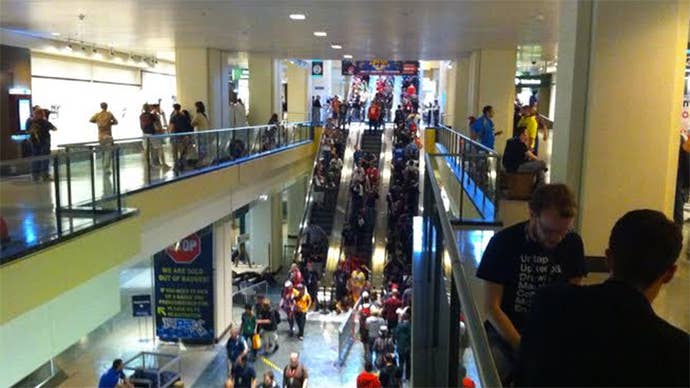
In the shadow of giants like Microsoft and Nintendo sits the Indie Megabooth, a place savvy attendees know as the destination for gaming's greatest, weirdest, and most untested ideas. On this relatively small chunk of floor space, many brilliant projects make their debut, sometimes showing up the massive triple-a developer distractions surrounding them.
But as PAX grows, the Indie Megabooth has felt the squeeze—at least in practical terms, if not metaphorical. At peak hours, the tiny corridor looping around showcased games finds its limited space fully occupied by a massive, teeming throng, marching forward with baby steps, waiting to be impressed. As this mass of flesh and licensed t-shirts pumps its way through the Megabooth's ventricles, the developers on display struggle to catch the attention of the countless faces filing towards them. And, even with the increase in elbow room, pitching an indie game outside the aegis of the Megabooth's hastily constructed walls presents its own unique challenges.
To fully understand the challenges of pulling off this amazing feat, I spoke with five indie developers about how they survive on the back of the ever-growing beast known as PAX.
[Tyler Sigman | Co-Founder, Designer | Red Hook | Game: Darkest Dungeon]

In the years since Sigman's first PAX, indies have risen to prominence. This may rob his game of the novelty it would've had only half a decade ago, but he believes things have only improved from the vantage point of your average attendee, here to undergo experiences rather than pitch them.
"It's a crowded market in the sense that standing out is difficult, but from a consumer's standpoint," says Signman, "it's awesome because there are so many choices, so many original ideas, so many opportunities to see games that maybe never would have been made if not for the recent shifts in the market."
While the sheer amount of people packed into the Megabooth may make it, at times, impossible to navigate, Sigman still sees the value of this space. With so many indies crammed together, people may come to see a different game, and unintentionally stumble into his. But PAX's continued growth can lead to problems for small teams looking to expose their game to the public, as Sigman explains: "This is the problem with super-high growth. It can be difficult to get booths here, so as the show grows, that gets harder and harder. And that can be a big deal: If you're not able to get a booth, and you miss one of the two biggest shows of the year, that's a very big cost."
Attendees aren't immune to these growth-related issues at PAX—try to purchase tickets outside of the window they immediately go on sale, and odds are, you'll be out of luck. But Sigman sees this scenario as being much better than the alternative, and is currently deciding whether or not the new PAX South—held in San Antonio, Texas—will be doable for Red Hook.
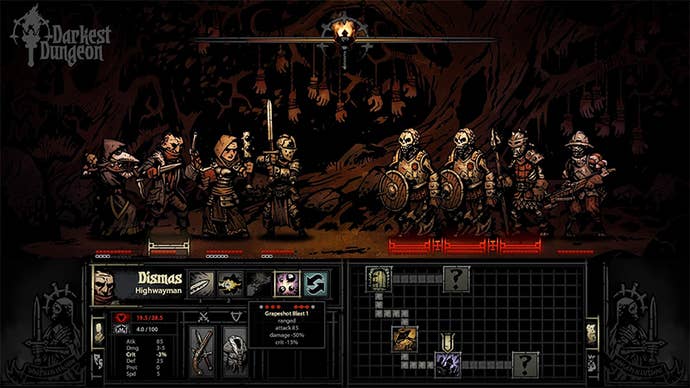
"I think [PAX] is very important," says Sigman. "It's very useful to reach both press and fans, and I think that's super valuable. It's hard to directly measure, but it has an effect, and you hope the reality is good. We're trying to decide whether to go to PAX South—and there's two things: One is cost, that's a concern. The second is, we have a release planned around that time, and it's hard to do a release while at a show."
Based on the amount of people streaming in and out of their booth, Darkest Dungeon seems to have taken PAX by storm. And, since the game will be self-published, Darkest Dungeon's developers give show floor demos themselves. While this provides an excellent opportunity for the Red Hook team to interact with fans, working any convention cuts into valuable development time.
Even so, Sigman credits Red Hook's PAX success with the team's hands-on approach to spreading the word.
"I think [attendees are] a bit surprised when they come here," says Sigman, "and you're answering questions. And they're like, 'What do you do?' And you're like, 'Oh, I'm the designer of the game.' And they're like 'Whoa, that's cool!' For us, that's really fun, too. It's a morale boost to be here and interact with the fans directly. It's a necessary shot in the arm before going back to the computers for 12 hours a day."
[Adam Rippon | Master Videogamesman | Choice Provisions | Game: Whoa Dave!]

Rippon recognizes the growth of PAX, but feels that the challenges of game development haven't changed much over the years. Though he's been a part of the gaming industry for 15 years, he's never felt as if the bigger publishers have been trying to squeeze him (or similarly-sized indies) out. "Certainly," says Rippon, "it's hard for a person breaking into the industry to get in and get noticed now. So maybe when you're at the absolute 'first game' kind of level, yeah, that's probably a nightmare. But when you've been doing this a long time, and people already know who you are... I don't think its gotten any harder. I think, maybe, there was a two-year window a couple of years ago where it was a little easier, but it's just going back to where things have always been."
For some, the presence of the Indie Megabooth is both a blessing and a curse. It may give indie developers a defined space, but some could view their corner as a way for indies to show off their games without disturbing the presence of larger publishers—even though some smaller titles sit alongside much, much larger ones on the show floor.
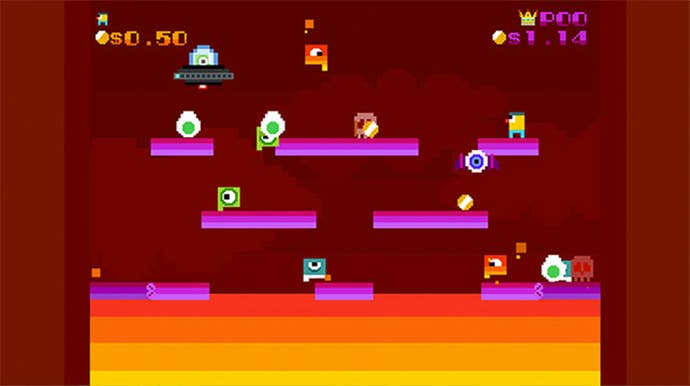
Rippon, however, only sees the positive side of being part of the Megabooth, primarily for its collaborative and supportive atmosphere. "For a lot of people, this is an excellent space to incubate their brand, meet with other people, and talk about their games," says Rippon. "I know at least half of the developers in this space, and I've gotten to know them pretty well over the last six PAXes. So that's been incredibly handy for me, and it still is. For some people, maybe it makes more sense to go off on their own, especially if they're larger, more successful indies, as they become too big for indie and become kind of like a triple-a brand. The Indie Megabooth is going to continue to grow and be strong and powerful right here, and I think some indies will be in other places and do their own thing successfully as well."
[Gregory MacMartin | CEO | Interdimensional Games | Game: Consortium]

This may be MacMartin's first PAX, but he definitely senses the convention's growing similarities to the Electronic Entertainment Expo. "It feels like E3 10 years ago," says MacMartin. "It's all about the gamers, all about showcasing all these awesome new games. And honestly, some of these booths, they spare no expense. It's amazing to finally get our game in front of all these people. [We're an] indie game developer, no publisher, no marketing or PR budget. We made this game, and it took seven years."
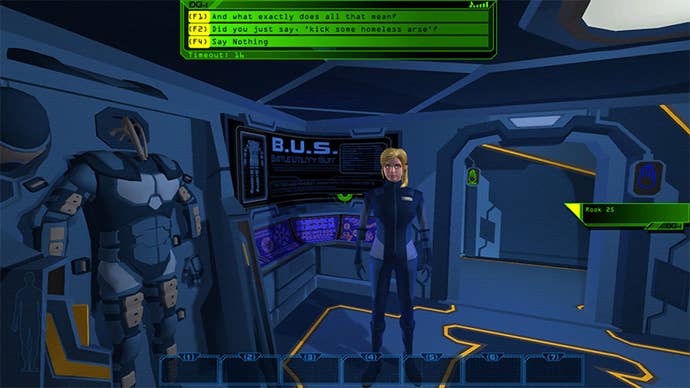
While we had trouble clearing enough space for a one-on-one interview in Choice Provisions' crowded setup, MacMartin had an excess of excitement for the Megabooth. "I feel very lucky to be here. They really curate the games very carefully. By being in the Megabooth, by definition, your game is good. In that way, it feels good to be part of this. Before this started, the people organizing the Megabooth really tried to get all of us developers to share information in terms of how to set up a booth... They really eased us into doing this. I have nothing but good things to say about the organizers of the Megabooth."
Still, the Megabooth isn't perfect. Though it has a defined space on the show floor, its promotional standees can get lost within the massive crowds. MacMartin highlighted this fact by pointing at a massive "Intel Inside" banner hanging just behind Choice Provisions' booth.
"For instance, this banner here—it's utter crap," says MacMartin. "It shouldn't be here. It's unfortunate. That should say 'Indie Megabooth.' There should be more attention called to this spot where all of us that are all starving artists, basically, are trying to make our games the best we can... If they want to give the Megabooth a really big presence of its own, it would do wonders, really."
[Matt Donatelli | Game Designer | Graphite Lab | Game: Hive Jump]

This PAX marks Donatelli's second, and his first as an exhibitor. Showing off his game for the first time presented some newfound problems, though most of them were travel-related. In fact, his development machine—the means by which attendees can play Hive Jump—nearly didn't make the trip, and suffered a smashed-in CD drive, a hard drive that jiggled its way loose, and a busted heat sink—though, miraculously, the machine remained operable.
Donatelli definitely understands the downsides of being away from the main attractions of the show floor, and prefers PAX East's layout, where the exhibition space spans one central area. During our conversation, he explained the challenges of life away from the main drag.
"At this booth," says Donatelli, "we're on the sixth floor, and a lot of people won't even make it up here or know it exists. But at least, for us, as indies, the constant foot traffic is still more marketing than we could possibly do, because we don't have money to spend on advertisements on the web. Everything's gotta be guerilla marketing. So just being here in front of large crowds is super helpful."
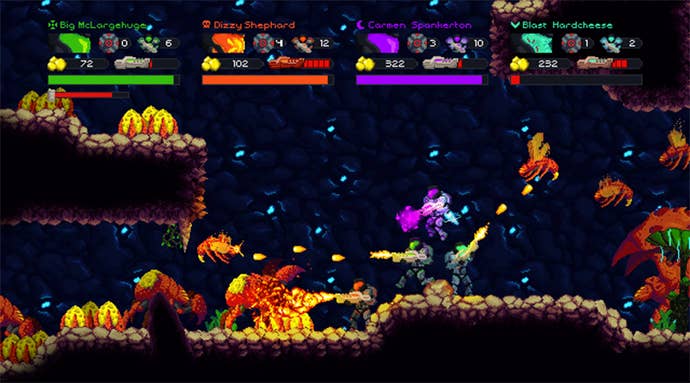
Hive Jump stands as Graphite Labs' first big indie title. Currently, Donatelli and his team perform work-for-hire duties on children's mobile apps, but their newest game has been a passion project Graphite Labs hopes will be the first of many original properties, and a welcome departure from their 9-to-5 duties. And this trip to Seattle didn't come without its costs. "We're paying out-of-pocket for this whole trip right now," says Donatellii, "and we have no physical merch for sale, so there's no way we're going to make that money back. The only hope is, for us, right now, we're on Kickstarter, and the attention we'll get at PAX... Hopefully we'll get more backers and reach our goal. And that'll help us raise the funds to finish our game."
[Ryan Baker | Vision Director | Pixelscopic | Game: Delver's Drop]

"I think PAX Prime," says Baker, "it seems like it's grown a little bit. It's definitely busier on the fourth floor and on also the sixth floor, I think, than in years past. PAX East, over time, has gone slightly more indie—indie being however you want to define it. It seems, earlier this year, in the Spring of 2014, there were fewer large studios and a lot more independent developers I had seen in the past."
Baker explained that, even though he finds it hard to compete with the bigger booths, he and other indie developers have a sense of camaraderie that leads to a spirit of cooperation. "Even in the Megabooth, a lot of people have ten-by-ten booths, there are a lot of people telling people who come by, 'Hey, go check out the guys across the street from us.' So anyone gaining promotion through booths like that helps everyone else... I think indies sticking together with indies helps us out," says Baker.
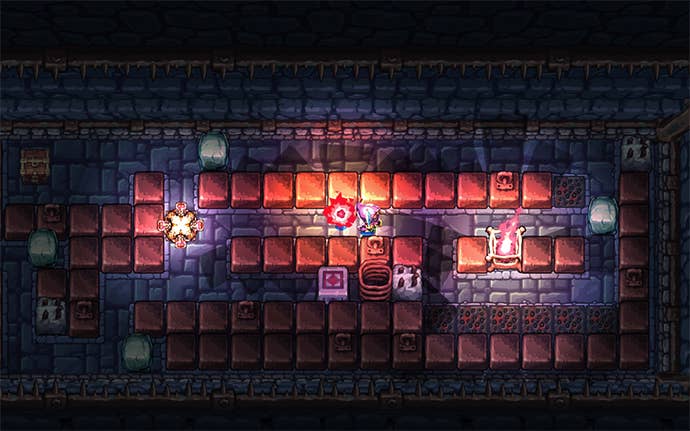
Still, Baker doesn't yet know if PAX is an absolute necessity for Delver's Drop. "It's something we talk about internally," he says, "and I've been thinking to myself [about it]. I think, for certain fans, if you didn't show up at PAX, they might wonder, 'Where are they?' But at the same time, what we have gained the most from PAX is getting really direct feedback, and taking a step back from development for even just a few days and watching people play the game. We test internally, but it's something very different to sit for eight hours a day and watch people who've probably never even seen it before try to play it, and see how they respond."
Though Baker believes the Megabooth has "capped out" in terms of how many indies it can support, the sixth floor provides plenty of opportunities and space for budding developers. And he views the upcoming PAX South as a possible new place for smaller games to outshine their big-budget competition.
"This being the first year for San Antonio," says Baker, "I have no idea what that's going to look like. I assume it's probably going to be mostly indies, because I think that the larger companies... I would guess that they'll probably wait to see how successful it is before they put a big booth in. It's also going to be hard for indies to go to every single show."
The Road Ahead
A decade since the first PAX, and this little convention spun off from a popular gaming webcomic is battling with the struggles of success. While it carries a much more positive, fan-focused culture than the halls of E3, in the passing years, its populist attitude has been crushed under piles and piles of money—and many feel the same way about PAX's creators. Though the featured interviewees had a mostly positive attitude about the convention, my conversations with them drew out some hints of uncertainty. As triple-a development grows untenable for all but the largest, most popular publishers, how will indie upstarts react when they're edged out by legendary developers like Ken Levine, who roll into their territory with reputations preceding them? With any luck, PAX South will allow smaller developers to showcase their work without this pressure, though, if the convention continues its steady growth, indie gaming may soon be synonymous with a different acronym altogether.
